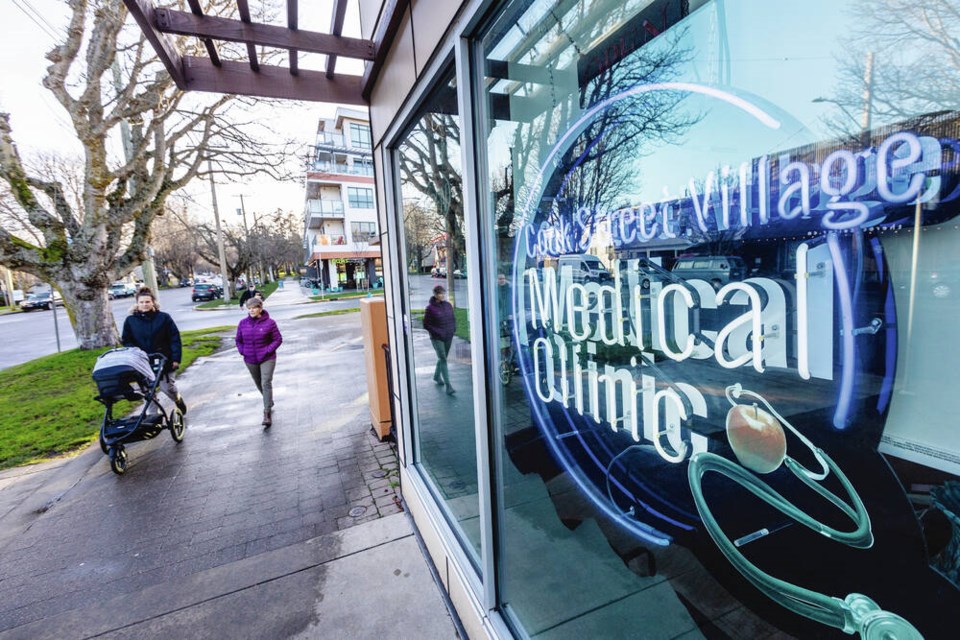Victoria is once again near the top of a national list for the longest wait times at walk-in clinics, according to data from Medimap, which provides wait times online for patients trying to visit a family doctor.
Victoria patients waited an average 137 minutes per visit at walk-in clinics in 2022, the second-highest in the country after North Vancouver, which had an average wait of 160 minutes.
The shortest wait in B.C. was 31 minutes in Richmond.
“The drastic increase in average wait times at walk-in clinics provides further evidence that healthcare systems across the country are struggling to provide adequate care,” said Thomas Jankowski, CEO of Medimap.
It’s not uncommon to see people lined up outside walk-in clinics and Urgent and Primary Care Centres in the capital region before they open in the morning.
The Medimap Walk-in Clinic Wait Time Index, released Monday, uses data collected from walk-in clinics across Canada, about 70 per cent of which use the company’s software to show wait times online.
The company was launched in Greater Victoria in 2016 by University of Victoria graduates and founders Blake Adam and Jonathan Clark and now operates in British Columbia, Alberta, Saskatchewan, Manitoba, Ontario and Nova Scotia.
The wait-time average across the country last year was 37 minutes, a 12-minute increase from 2021, when it was 25 minutes, according to Medimap. All provinces saw an increase in overall average wait times.
The average wait time in B.C. has increased over recent years to 79 minutes in 2022, versus 58 minutes in 2021 and 2019.
By comparison, patients in Nova Scotia waited an average of 83 minutes and Saskatchewan patients waited 51 minutes — the longest average wait times across Canada in 2022.
The shortest wait times were in Ontario, at an average of 25 minutes, and Manitoba, at 31 minutes. Six of the top 10 cities with the shortest wait times in 2022 were in Ontario, with Brampton recording the shortest average wait time at 10 minutes.
The wait-time report comes as B.C. kicks off registration for a new family physician payment model negotiated last year, in an effort to recruit and retain more family doctors.
As an alternative to the traditional fee-for-service model, the new scheme offers greater compensation and the ability to see patients longer, and fewer pay codes, which means less paperwork.
The hope is that by recruiting and retaining more family doctors, the province will reduce pressure on Urgent and Primary Care Centres, walk-in clinics and hospital emergency departments.
An estimated one million people in B.C. don’t have a family doctor, including about 100,000 on the south Island.
Prime Minister Justin Trudeau said Tuesday his government will increase federal health-care transfers to the provinces by $196 billion over the next 10 years — about $46 billion or one-quarter of which is new.
B.C. Premier David Eby said the increase in federal health care funding is something former premier John Horgan pushed for “for a long time.”
“This proposal is fiscally limited, but I think that it provides a foundation and some reassurance to British Columbians that we’re having those conversations and we’re moving forward,” said Eby, adding he looks forward to further talks about how health care is delivered to Canadians.
On Thursday, B.C. Health Care Matters, a grassroots group founded by Langford mother Camille Currie after her family lost their doctor, will host an online virtual town hall on the “primary care crisis.” The town hall will start at 6:30 p.m. and include family physician Dr. Vanessa Young as one of the speakers. It can be watched via YouTube.



